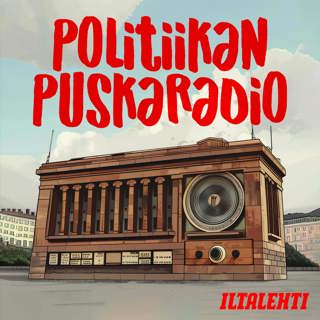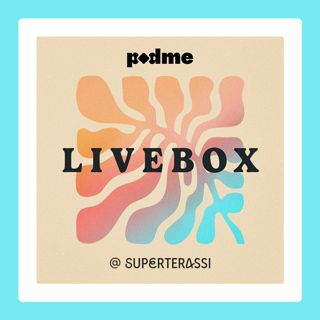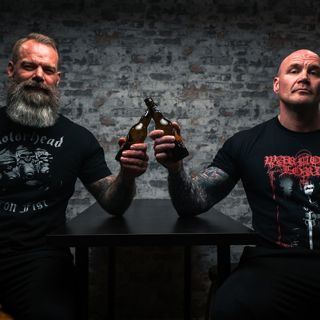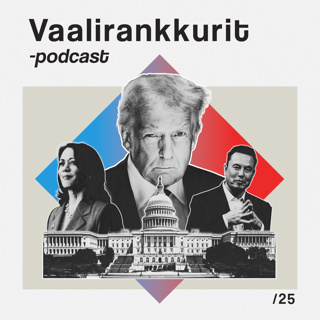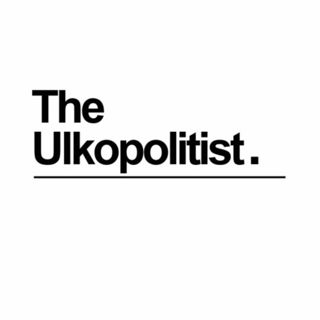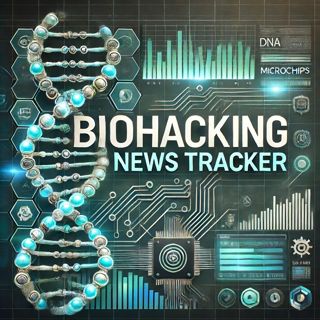
Biohacking Gains Popularity as Tech Leaders, Wellness Enthusiasts Embrace Transformative Practices
Biohacking is swiftly carving a niche among those keen on pushing the bounds of human performance and wellbeing. As this concept gains traction, events like the IGNITE Pool Party at Modi Nochi in Los Angeles are becoming increasingly popular. These gatherings are not just social occasions but hubs where enthusiasts can explore various facets of biohacking. Attendees at such events may find themselves engaged in a multitude of activities from yoga and sound baths to workshops on breathwork and tarot reading. The presence of healers, body workers, and live music add to the immersive experience, making it a fertile ground for networking and learning among like-minded individuals.Meanwhile, figures in the tech and business sectors are also showing a burgeoning interest in the uses of biohacking. One notable individual is a billionaire who has been in the headlines for pioneering efforts in cryptocurrency and promoting psychedelic research. His advocacy for biohacking further highlights how this practice is being integrated into various lifestyles and industries to enhance personal and business performance. This tycoon envisions harnessing biohacking not just for personal health but potentially reimagining global platforms like the Olympics.In the medical field, biohacking is making significant inroads as well. Dr. Mark Hawass, operating out of the Greater Toronto Area, has been utilizing biohacking techniques to combat chronic conditions such as pain and arthritis with his Revolutionary VIP Biohacking Method. Since 2019, his approach has reportedly transformed the lives of numerous patients, demonstrating the potential benefits of biohacking in clinical settings. The method harnesses cutting-edge science to tweak the body’s process to fight disease more robustly.These examples illustrate the broad spectrum of biohacking's applications, from enhancing day-to-day health and wellness to potentially revolutionizing how we understand medical treatment and physical fitness. As this trend continues to evolve, it will likely offer even more innovative solutions to long-standing challenges in health and human performance, making it a field worth watching for developments that could impact broad aspects of life and society.This content was created in partnership and with the help of Artificial Intelligence AI
3 Elo 20242min

Biohacking Billionaire Aims to Revolutionize Olympics and Mental Health
In the rapidly evolving world of tech and health, a growing community known as biohackers is pushing the limits of what the human body and mind can achieve. Among the forefront of this movement is a billionaire whose ventures span from cryptocurrency to promoting the use of psychedelics, and whose latest ambition is to revolutionize the Olympic Games.Biohacking combines elements of neuroscience, molecular biology, and biotechnology to optimize human performance and wellbeing. Common practices include the use of nootropics or "smart drugs" that boost cognitive functions, genetic modifications like CRISPR, and implementing rigorous regimes that monitor diet, sleep, and exercise to enhance one’s biological capabilities.One figure making headlines within this circle is not just a typical silicon valley tycoon but a visionary who believes in the potential of merging advanced technology with human biology to enhance human abilities far beyond their natural states. His proposal to revamp the Olympics into a platform that celebrates human and technological integration presents a futuristic vision of the world's most prestigious sporting event.This billionaire isn't just stopping at transforming human capabilities; he's also a staunch advocate for the controlled use of psychedelics in mental health treatment. Research into substances like psilocybin and LSD has shown promising results in treating depression, PTSD, and other mental health disorders. By advocating for the destigmatization and legalization of such substances, he aims to unlock new psychotherapeutic potentials that could revolutionize mental health care.Furthermore, his engagement with cryptocurrency showcases a broader commitment to transforming conventional systems using digital solutions. His enthusiasm suggests a belief that blockchain technology and cryptocurrencies have the potential to decentralize and democratize economic systems on a global scale, offering more equity in financial opportunities and uncoupling financial success from traditional infrastructures.What sets this billionaire apart is not just his deep pockets but his willingness to explore and invest in ideas that may seem out of bounds or futuristic. His investments and interests illuminate a trajectory toward a world where technology and biology converge, offering possibilities that could reshape everything from sports and human performance to mental health and economic systems.In an era where technology continuously reshapes our lifestyles and possibilities, the role of individuals like this biohacking billionaire is pivotal. They not only provide the capital needed to brave new frontiers but also frame the public discourse around these innovations, often pushing societal boundaries to reimagine what the future could look like.This content was created in partnership and with the help of Artificial Intelligence AI
1 Elo 20242min

Biohackers Claim 31% Slower Aging with Alternative Approaches, But Caution Advised
Biohacking has emerged as a cutting-edge frontier in the realm of personal health and wellness, where individuals use science and technology to make their bodies function more effectively and efficiently. This innovative practice encompasses a broad spectrum of activities, ranging from the genetic, like editing DNA, to the relatively simple, like dietary modifications and supplementation.One intriguing aspect of biohacking centers around aging and skin care. For example, a biohacker cited in a recent report claims to be aging 31% slower than the average person, attributing their success not to traditional skin care methods but to alternative approaches such as advanced supplements and possibly technology like red light therapy. This type of light therapy, which is believed by some to reduce wrinkles and improve skin health, is increasingly popular in the biohacking community. Moving into specifics, red light therapy belts are marketed not only for their supposed skin health benefits but also for pain relief and muscle recovery, broadening their appeal. As we advance into 2024, the selection of these devices continues to grow, featuring options that offer varying intensities, coverage areas, and additional functionalities. The ultimate choice in such a therapy product would typically depend on user preference for features like portability, ease of use, and effectiveness as portrayed in user testimonials and potentially clinical evidence.However, the claims of biohacking, particularly in areas such as drastically slowed aging or significantly improved skin health, should be approached with caution. Although some biohackers report remarkable personal achievements, these results are often anecdotal and may not universally apply due to differences in individual health, genetics, and lifestyle. Moreover, the field of biohacking is not strictly regulated, which means the effectiveness and safety of many biohacking devices and supplements may not have undergone rigorous scientific evaluation.Consumers interested in exploring biohacking techniques such as red light therapy belts should conduct thorough research and consider consulting with a healthcare professional. This due diligence is crucial not only to ensure safety but also to make informed decisions based on the best available evidence, rather than anecdotes or compelling marketing alone. As biohacking continues to evolve, it remains to be seen how its practices will align with mainstream medicine and whether its most enthusiastic predictions will manifest in widespread health and longevity benefits.This content was created in partnership and with the help of Artificial Intelligence AI
30 Heinä 20242min

Biohackers Quest for Longevity: Exploring the Frontiers of Anti-Aging Innovation
Biohacking represents the frontier where biology and do-it-yourself innovation meet, allowing individuals to modify their bodies and minds to enhance functionality, resilience, and longevity. One such biohacker, Erin O'Hara, has delved deep into the various methodologies that seek to slow down the aging process—science's elusive holy grail.From mainstream to fringe, the approaches to biohacking vary wildly. Some researchers are focused on developing pharmaceutical interventions that can mimic the effects of caloric restriction, a technique shown in numerous studies to help extend life in animals. These drugs target specific pathways in the body that are believed to regulate aging and metabolic health. For example, metformin, a common diabetes medication, is being explored for its potential to extend lifespan due to its effects on blood sugar levels and possible protection against cancer.The use of young blood transfusions as a method to rejuvenate older individuals is another controversial yet fascinating area of exploration. Studies in mice have shown that infusing older mice with the blood of younger counterparts can reverse signs of aging in the brain, muscles, and other tissues. Although this has spurred interest in trials for humans, the science is still in its infancy, and ethical as well as biological repercussions need thorough investigation.Then, there's the approach of incorporating laughter into everyday life as a means to extend one’s lifespan. Laughter triggers a cascade of positive physiological effects in the body, from reducing stress hormone levels and improving immune function to increasing blood flow and improving artery health. The connection between a hearty laugh and enhanced longevity may not be as direct as pharmacological interventions but embracing joy and humor as parts of daily living can contribute to a healthy, long life.Biohackers like Erin O'Hara are also often proponents of technological augmentations, genetic modifications, and the futuristic merging of humans and AI as methods to tackle aging. Discussions around the ethical implications, the socio-economic divide, and the potential risks of such technologies are as rampant as the innovations themselves.Exploring these unconventional methodologies highlights a broader, essential dialogue about longevity: it’s not just about living longer but also about enhancing the quality of life as we age. As we delve deeper into understanding the human body through the biohacking lens, it becomes imperative to balance radical innovation with careful, ethical considerations to truly harness the benefits of these life-extending techniques. In a rapidly aging world, the lessons drawn from biohacking could pave the way for a future where living well into our later years might be achievable for everyone.This content was created in partnership and with the help of Artificial Intelligence AI
28 Heinä 20242min

"Biohacking Transforms from Niche to Mainstream Movement Focused on Body Optimization"
Biohacking is quickly transitioning from a niche interest to a widespread movement, characterized by the practice of merging biology with hacker ethos. This unconventional practice aims to modify the human body with the objective of optimizing performance, enhancing cognitive abilities, and extending lifespan.David Asprey, popularly hailed as the "Father of Biohacking," has played a significant role in promoting this movement. Known for his entrepreneurial ventures and advancements in this field, Asprey's efforts have spotlighted biohacking on a global stage, encouraging more individuals to engage with this intriguing intersection of technology and biology.At its core, biohacking can involve anything from genetic engineering to implant technology and nutritional modifications aimed at making bodies work more effectively. Some common practices include the use of nootropic drugs to enhance cognitive function, the installation of small implants that provide sensory improvements, or the adoption of strict dietary protocols to influence physical and mental health.The biohacking market itself is witnessing remarkable growth, with an impressive compound annual growth rate of 18.4%. This growth stems not only from a collective fascination with transcending natural biological limits but also from increasing accessibility to technologies and information.Biohacking's appeal also extends to its potential applications in improving daily functioning and health. For instance, in the United Kingdom, trends indicate a burgeoning community that equates biohacking with significant enhancements in lifestyle and healthcare outcomes, reflecting a broader societal shift towards personal wellness and preventive care.In summary, as biohacking continues to evolve, it merges science with the spirit of experimentation. For many, it represents a frontier for personal development, requiring a careful balance between innovation and safety. This blending of cutting-edge technology with human biology may indeed be the harbinger of future advancements in enhancing human abilities. Whether used for simple life hacks or complex genetic modifications, biohacking remains a fascinating glimpse into the future of human potential.This content was created in partnership and with the help of Artificial Intelligence AI
27 Heinä 20242min

Biohacking Revolutionizes Human Longevity and Enhancement
Biohacking is emerging as a revolutionary field with the tantalizing promise of extending human longevity and enhancing vitality. It encompasses a broad range of activities, from genetic engineering and do-it-yourself biology to dietary and lifestyle tweaks, all aimed at altering human biology for better performance and health.At the forefront of public interest is the potential application of biohacking techniques to rejuvenate political leaders like President Joe Biden. This specific interest stems from the realization that leading a nation demands a high level of cognitive and physical ability—attributes that can dwindle with age. While biohacking offers several interventions like gene editing, nootropics for cognitive enhancement, and advanced nutritional strategies, it also raises ethical and safety concerns. These include issues of accessibility, fairness, and the potential long-term impacts on humans.The scope of biohacking is vast. For instance, an innovative concept within this field mentioned in Women's Health Australia is seed cycling. This natural approach aims to support hormonal balance by consuming specific seeds at different phases of a female’s menstrual cycle. It highlights how biohacking isn't just about high-tech solutions but can involve simple dietary adjustments to promote health.Another aspect of biohacking is evident in industries beyond healthcare. LG Energy Solution’s negotiations with Chinese firms to manufacture low-cost electric vehicle (EV) batteries in Europe illustrate technological advancements aimed at economic efficiency and sustainability. The emphasis on reducing the cost of cathodes—a major expense in battery production—reflects a form of industrial biohacking where companies manipulate materials and components to improve product performance and longevity.As biohacking continues to evolve, it offers profound possibilities for human enhancement. Whether it's improving the health and capacity of aging leaders, assisting women in managing hormonal health, or innovating within the tech industry, biohacking holds potential across various fields. However, as with any disruptive technology, it requires careful regulation and consideration of its broader impacts on society and ethical norms.This content was created in partnership and with the help of Artificial Intelligence AI
25 Heinä 20242min

Biohacking Revolutionizes Personalized Health and Longevity
Biohacking has emerged as a captivating frontier in the quest for optimizing human potential and longevity, blending the cutting-edge of biotechnology with self-improvement techniques. Dr. Casey Means underscores this movement in the podcast "Beyond Biohacking to Metabolic Mastery," where she discusses moving beyond simple biohacks to a comprehensive understanding of one's metabolism. This approach not only highlights the technical aspects but also embraces a joy-based health perspective, challenging the traditional, often rigid healthcare paradigym that typically focuses on treatment rather than prevention.The practice of biohacking can be seen in various forms, from the simple, such as tweaking one’s diet and exercise, to the more complex, like the genetic engineering of cells. A compelling example of advanced biohacking is found in recent advancements where B cells, a type of white blood cell, have been engineered to produce custom antibodies. This groundbreaking technique points to a future where medical treatments can be incredibly personalized and effective, steering away from one-size-fits-all solutions and towards precision medicine.Dave Pascoe’s story further exemplifies the transformative potential of biohacking. At 61, Pascoe physically mirrors a 38-year-old, thanks to his meticulous attention to his biological health. His regimen likely includes a combination of dietary adjustments, targeted supplements, optimized exercise routines, and perhaps more sophisticated methods like periodic fasting or cold exposure, all tailored to his specific genetic makeup and metabolism.These instances reveal just how broad and intriguing the field of biohacking is. Whether it’s improving personal health, pushing the boundaries of human capabilities, or revolutionizing medical treatments, biohacking offers a blend of innovation and personal empowerment. Its rise signals a profound shift in how individuals can influence their health and longevity, emphasizing preventative and personalized approaches. As more people like Dr. Casey Means and Dave Pascoe continue to explore this space, they not only transform their lives but also contribute to the growing understanding and acceptance of biohacking as a legitimate and powerful approach to health and well-being.This content was created in partnership and with the help of Artificial Intelligence AI
23 Heinä 20242min

Biohacking Emerges as a Potential Game-Changer for Reducing Auto Insurance Costs for Poorer Drivers
Biohacking, a term that seems to be creating waves across various sectors, is increasingly showing its diverse range of implementations, from lifestyle enhancement to impacting broader, more systemic issues like insurance rates. At its core, biohacking involves tinkering with biology, through various means like genetic engineering, nutritional modifications, and electronic implants to optimize performance, enhance bodily functions, or even to simply alter one's lifestyle for the better.Interestingly, the concept has even found relevance in the world of auto insurance. Statistics have shown that poorer drivers end up paying up to 48% more for car insurance. The reasons for this surcharge can be multi-faceted, ranging from the higher risk associated with areas that have greater rates of accidents or thefts, to less stable credit scores which insurers use to gauge the reliability of a person. Biohacking could be a game-changer here as it can help individuals improve their cognitive functionalities and potentially their driving abilities.For those unaware, poorer areas also often suffer from factors like lesser access to healthy food options, greater environmental pollutants, and heightened stress levels, all of which can impact cognitive and physical health adversely. Biohacking approaches such as nutritional supplements, optimizing sleep, and stress management techniques can potentially offset these disadvantages to a certain extent. Better health through biohacked lifestyles could equate to better driving habits and record, which in turn could influence insurance rates positively.Apart from physical health, mental and emotional resilience, often enhanced through various biohacking techniques like meditation or neurofeedback, can significantly impact one's response time and decision-making processes, crucial skills in driving. A person who is biohacking might find themselves better able to manage the stress of driving in high-traffic conditions, or avoiding aggressive or reactive driving, which are often causes for accidents.This mentioned insight brings to light an often overlooked aspect of biohacking - its socio-economic implications. By potentially providing a means to improve individual health and behavior, biohacking could indirectly contribute to larger economic benefits for poorer communities who are currently paying a premium for being at a perceived higher risk, thanks primarily to factors beyond their control.éfonoMoreover, biohacking not only holds promise for person-centric benefits but could scale up to societal benefits, particularly evident in the context of auto insurance. The usage of biohacking techniques could very well become a recommended practice for risk mitigation, embraced by insurance agencies to incentivize healthier, safer lifestyles which could in turn justify lower premiums.However, it's crucial to approach biohocking with cautious optimism. As with any intervention that involves complex systems like human biology, there are risks involved. For instance, unregulated use of supplements could lead to harmful effects, while not all biohacking practices have been universally accepted or validated by the scientific community. Furthermore, there's a philosophical and ethical debate about the extent to which one should alter or enhance human capabilities.Biohacking's impact on reducing auto insurance costs for poorer drivers highlights an innovative cross-disciplinary benefit that goes beyond personal health and well-being. It exemplifies how emerging technologies and methodologies are increasingly interfacing with every facet of human life. While it's not a magic bullet, it certainly opens up a discussion for holistic approaches towards tackling systemic socio-economic challenges. As society shifts towards more personalized ways of managing health, well-being, and financial systems, biohacking stands out as a profound catalyst in bridging disparities, potentially making it a vital tool in the arsenal for addressing complex issues like inequality in insurance premiums.This content was created in partnership and with the help of Artificial Intelligence AI
21 Heinä 20244min





